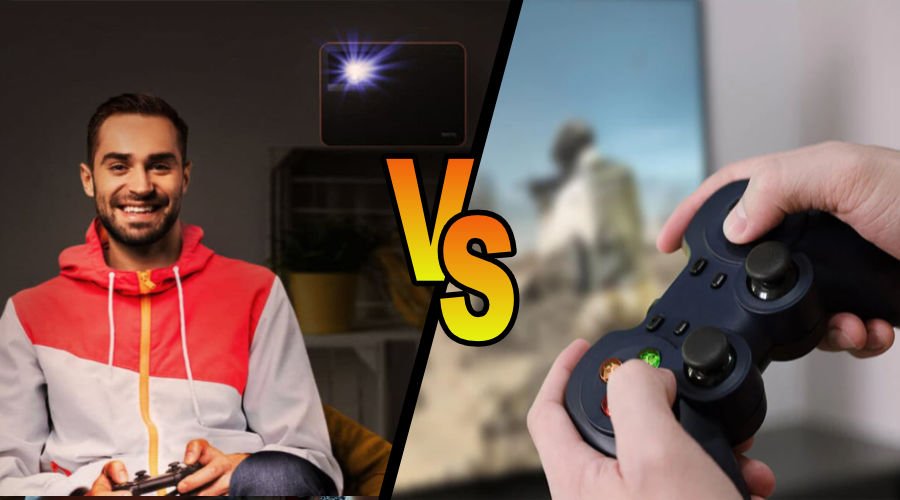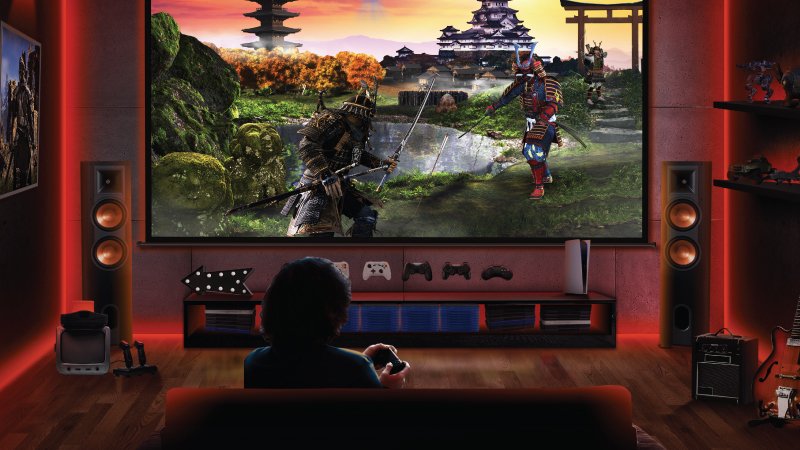Projector
Monitor
Lighting
Digital Display
Job References
This site uses cookies. By continuing to browse the site you are agreeing to our use of cookies, you can also manage preferences.
This site uses cookies. By continuing to browse the site you are agreeing to our use of cookies, you can also manage preferences.
Projector
Monitor
Lighting
Digital Display
Job References
Projector
Monitor
Lighting
Digital Display
Job References
Knowledge Center SupportOne of the traditional shortcomings of projectors has always been long throw distance, and we’re not trying to be funny with our words here. Throw distance means the space a projector needs between its lens and the screen for any given image size. For example, older projectors would need as much as 20 feet for a 100” screen. If you think about movie theaters, then there’s clearly a massive throw distance, measured in tens of meters. Thankfully, projector lens technology has moved on and new generation projectors deliver what’s known as short throw and even ultra short throw, or basically that same 100” screen from less than 9 feet or approximately 3 meters. This is a huge improvement over previous iterations, and allows for big screen viewing even in smaller and confined spaces. Plus there’s less risk of someone walking in front of the lens with a bucket of popcorn.
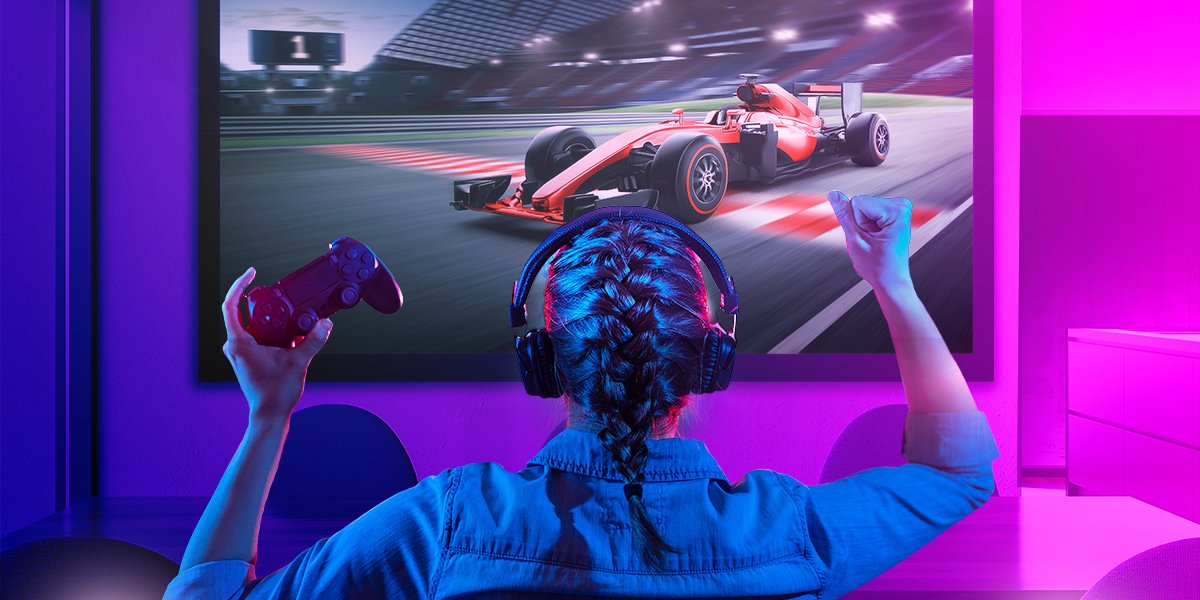
Defining short throw projectors is simple. If a projector is capable of showing a 100” image from less than 9 feet or 3 meters, then it’s considered short throw. Projectors that require more than 9 feet or 3 meters to deliver an image 100” in size are regarded as regular throw. This is how throw distance is categorized, but there’s also the issue of throw ratio. That’s the throw distance divided by the image size. Or in other words, how many feet of distance are needed for each foot of screen. Most projectors traditionally had a throw ratio of 2, but modern models can do better.
Within the BenQ lineup of projectors, we can take the TK700 and TK700STi gaming projectors as examples of low throw ratio models. The TK700 needs 8.2ft meters for 100” and has a throw ratio of 1.1 to 1.3, while the TK700STi goes even better with a throw ratio of 0.9 to 1.0 and only needs 6.5ft for 100” displays.
As such, high performance BenQ gaming projectors are designed with short throw distance and low throw ratios while delivering low input latency and true 4K HDR in the case of the TK700 and TK700STi. They’re purpose-made for gaming in more environments, unlike general use or home cinema projectors. Thanks to short throw, set up in smaller spaces is not only possible, but advisable, making big picture format gaming accessible to more consumers.
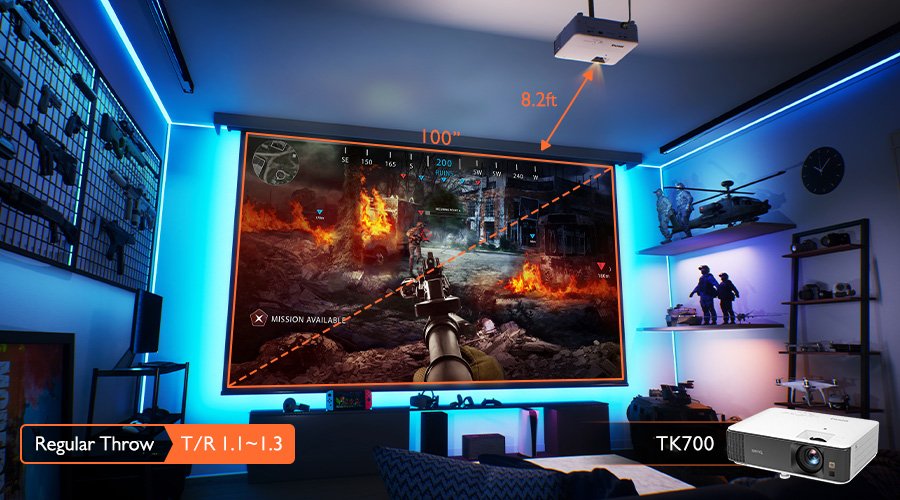
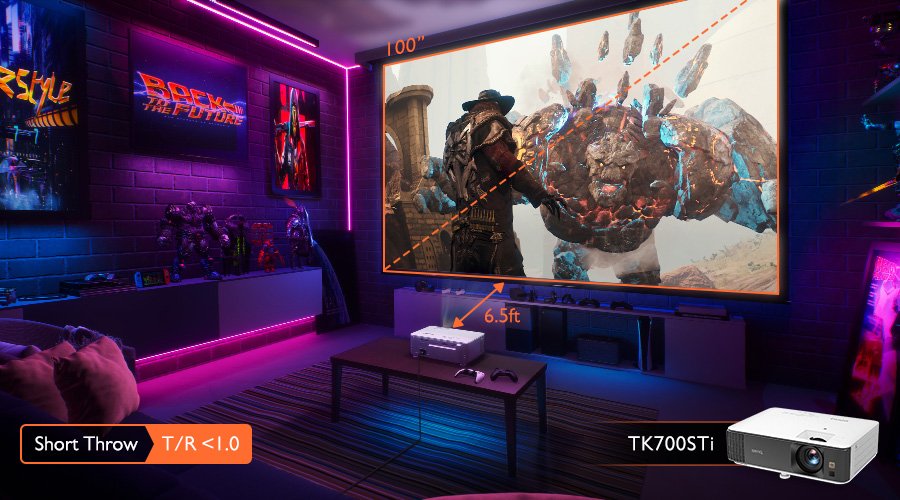
Because traditional long throw is a disadvantage. You need to have a lot of space for projectors with long throw. They must sit far away from the screen, hence the original association between projectors and theater-like rooms that aren’t practical for most people. The further a display source is from the screen, the more likely you are to experience image distortion and deterioration, which is another factor to consider. And as we said before, a projector that sits behind its audience is just asking for disruptions and disturbances in the form of people and other viewers like your pets getting in front of the lens to cast unwanted shadows on the screen.
Essentially the flip side of long throw disadvantages. With short throw, light doesn’t need to travel through as much medium, so for starters you get more consistent image quality. Then the biggest plus is flexible placement in rooms and spaces of more diverse sizes. No longer limited to gigantic rooms, top notch projectors with short throw now fit even in modest dwellings. This trait is especially useful for gaming, as more and more people want to experience this hobby on large, wall-sized displays while living in average urban apartments. By eliminating the bothersome distance requirement, short throw technology opens projectors up to people who previously would have been scared away by prohibitive setup considerations.
And once more, with short throw the projector sits in front of the audience. Need to go to the bathroom? Want to grab a drink? No need to duck and hide while walking. The projector sits much closer to the screen and you won’t have to walk across the lens ever again.

Clear All
{{displaySortType}}

{{item.displaySortType}}
{{item.productWordingData.productWordingTitle}}
{{item.productWordingData.productWordingTitle}}
{{item.productWordingData.productWordingTitle}}
{{spec}}
{{item.price}}
{{item.price}}
{{item.promotePrice}}
Save {{item.savePrice}}
Pre-order Now Pre-order will be available starting {{item.localReleaseDate}}
Pre-order Now Pre-order will be available starting {{item.localReleaseDate}}
Pre-order Now Pre-order will be available starting {{item.localReleaseDate}}
{{item.created}}
{{item.img}}
{{item.link}}
{{item.gamodelid}}
{{item.skucode}}
{{item.stock}}
{{item.price}}
{{item.category}}
{{title}}
We will notify you when we have more.
We will send you an email once the product become available.Your email will not be shared with anyone else.
Sorry, our store is currently down for maintenance.We should be back shortly. Thank you for your patience!
The requested qty is not available
The requested qty exceeds the maximum qty allowed in shopping cart
Product that you are trying to add is not available.
Short throw tech didn’t emerge in a vacuum. It came along as engineers and designers were trying to free projectors from their “home cinema for people that live in mansions” niche. Lots of effort has gone into this, but now we have short throw projectors to revolutionize movies and gaming. And do so for a wide and eclectic audience, whether urban, suburban, or rural. Almost totally liberated from space and placement restrictions, this new generation of projectors is a marvel of progress.
Not to brag, but take a look at our TK700STi gaming and home entertainment projector. The TK700STi gives you pristine 100” 4K from just 6.5 feet or 2 meters. That’s barely over two meters. Your typical studio apartment can easily swing that. Two meters is far closer than most people sit away from 65” TVs, except you get more than 50% extra screen with the projector.
We said overall progress, so in what other ways have projectors improved? And by inference, what should you look for?
Thanks for your feedback!
